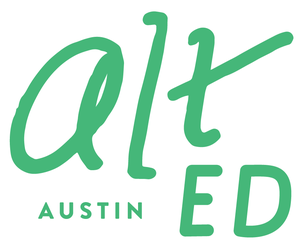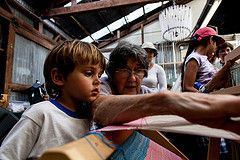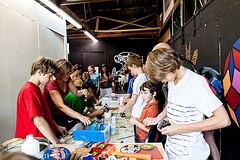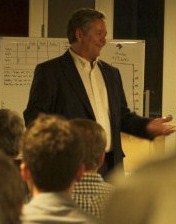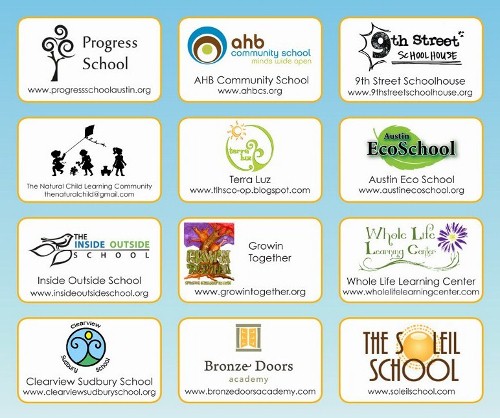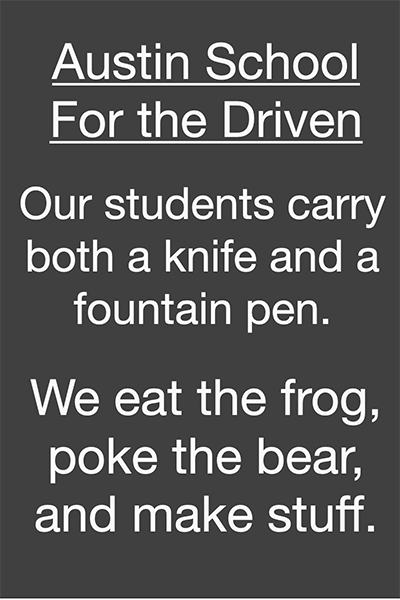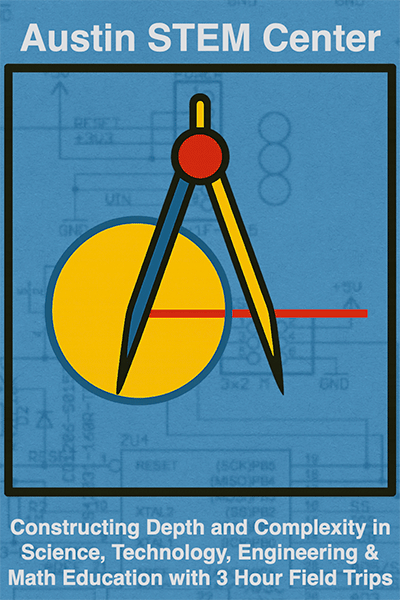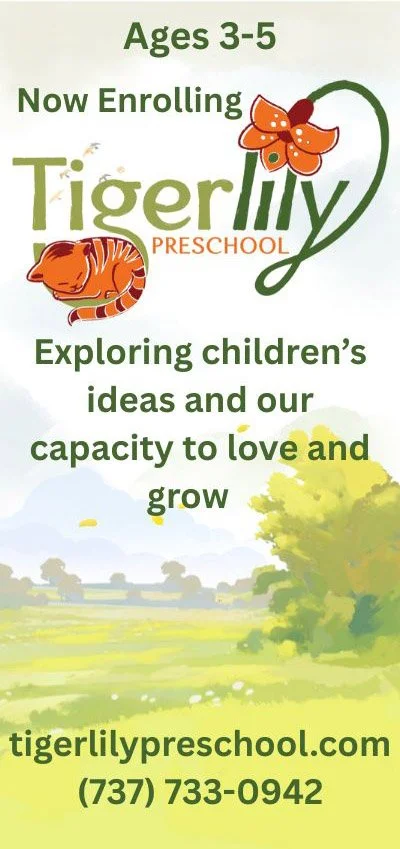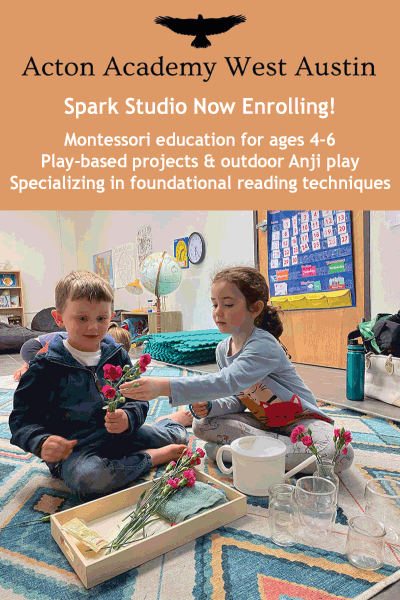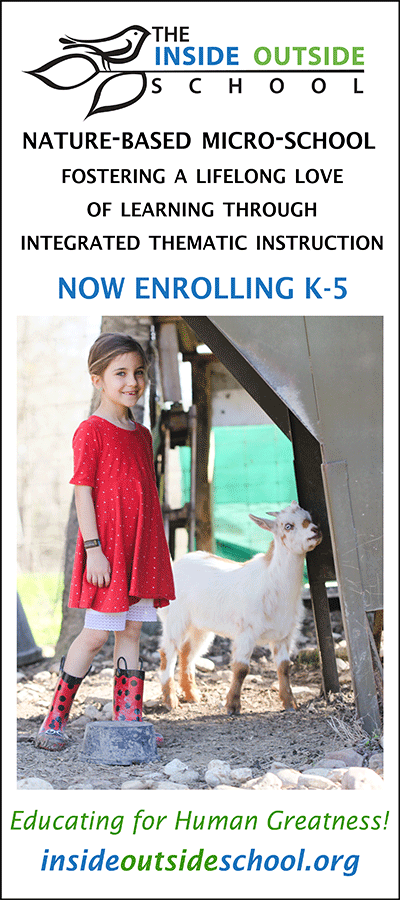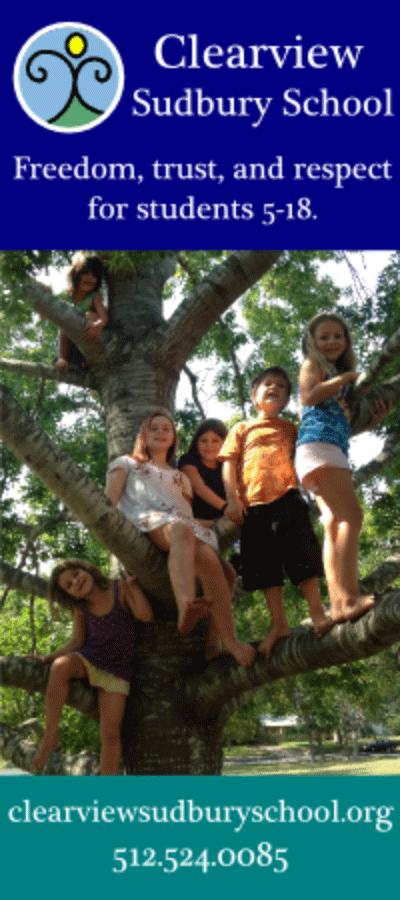On the heels of last weekend’s wildly successful Education Transformation School Fair, many participating schools and other alt ed programs are following up with open houses, tours, and special events for this week. In fact, the entire month of March is positively bursting with opportunities to get to know the people and places of Austin’s alt ed community—and find the right fit for your kid. Check our calendar for all the details. Here’s a preview:
On Saturday, March 2, visit The Natural Child Learning Community, a Montessori-inspired, nature-oriented preschool in the heart of Georgetown. The program provides a part-time, holistic learning environment for children between the ages of 2-1/2 and 5.
The next day, Sunday, March 3, head over to the 9th Street Schoolhouse in near East Austin to meet Caitlin and Laura, who place radical faith in children and, following the Free School model, offer guidance and experiences to develop lifelong learners. They have one immediate opening for a girl and are enrolling boys and girls age 5–12 for the fall.
Monday, March 4, is a great day to check out two South Austin alternative schools. The Whole Life Learning Center, part of the Self-Design network, is a two-acre school where kids age 5 and up work with mentors to develop holistic, individualized learning plans, honoring each learner’s physical, intellectual, emotional, and spiritual development. The Austin EcoSchool is offering a family tour of its "Edible Campus," where you’ll see students’ work, meet the staff, and learn about the school’s unique programs, including Game of Village. It is currently enrolling for ages 5–14.
On the evening of Tuesday, March 5, the Clearview Sudbury School will host a free talk and Q&A with scholar and author Peter Gray (who is also speaking in town this week at the SXSWedu conference). Dr. Gray, a research professor at Boston College who blogs regularly at Psychology Today, is a leading authority on the role of free play in children’s development; his new book, Free to Learn, will be officially released the same day. Clearview staff, students, and parents will be on hand to answer questions about this democratic K–12 school in Central Austin.
Friday, March 8, is your next chance to visit the Inside Outside School. Let them know to expect you, and you'll get the full tour of this community-based, intentionally small learning community situated on more than seven wooded acres in Pflugerville. “Teaching for Human Greatness” is their creed, and they’re now enrolling kindergarten through 5th grade.
And now for something completely different: On Wednesday, March 13, the Growin' Together Hands-on Afterschool Program will host a SXSW Youth Showcase, featuring some of the hottest bands in the 18-and-below universe. It’s free for all ages (donations accepted) and will rock the Austin EcoSchool campus.
After spring break, on Wednesday, March 20, join the parent tour of AHB Community School, a creative and collaborative educational alternative that seeks to cultivate authentic, balanced critical thinkers who are prepared for a life of learning and community engagement. AHB serves ages 5–12 in Central Austin. Be sure to give them a heads-up that you’re coming so they can prepare the best tour possible for you. Can’t make it that day? You’ll have another chance on March 27 and on other Wednesdays in April and May.
To stay up-to-date on alt ed events, make a habit of visiting our calendar and clicking on any listing for details. Much more is coming up this spring, with many doors opening to you and your children.




